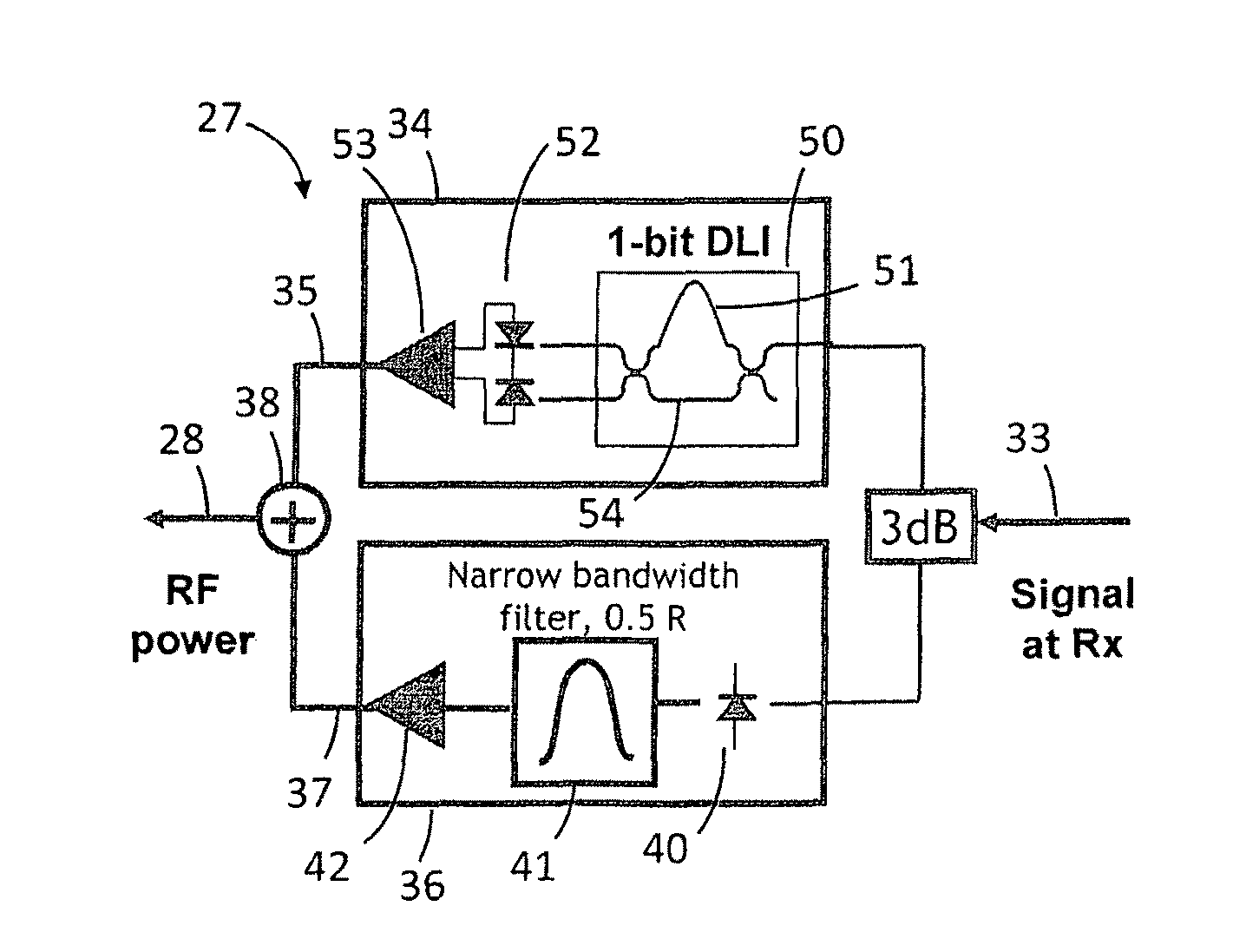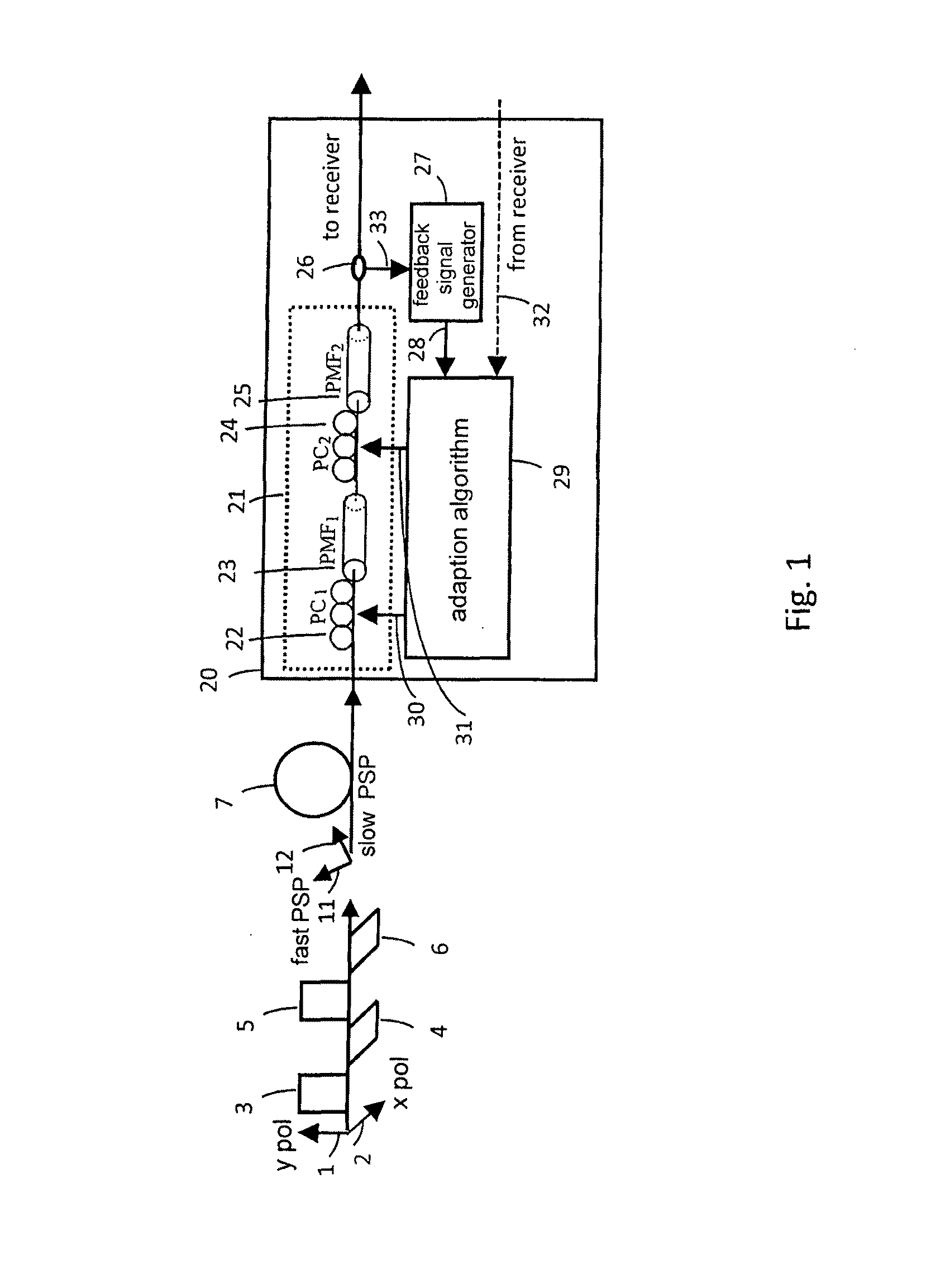Generation of a feedback signal for a polarization mode dispersion compensator in a communication system using alternate-polarization
a technology of polarization mode dispersion compensation and feedback signal, which is applied in the direction of electrical equipment, electrical transmission, transmission monitoring, etc., can solve the problems of complete receiver with clock and data recovery, severe degraded signal quality, and signal interference between subsequent symbols
- Summary
- Abstract
- Description
- Claims
- Application Information
AI Technical Summary
Benefits of technology
Problems solved by technology
Method used
Image
Examples
Embodiment Construction
[0053]FIG. 1 shows a feedback loop for adapting a PMDC in a transmission system using an Apol format. Such transmission system preferably uses a 40 or 43 Gbps Apol RZ DPSK format. Preferably, the transmission system is a long-haul transmission system, in particular a submarine transmission system. The right hand of FIG. 1 illustrates an example for an Apol RZ signal as generated by a transmitter. The Apol signal has a plurality of RZ pulses 3-6, where each pulse 3-6 has either a first polarization 1 (here: “x pol”) or a second polarization 2 (here: “y pol”). Both polarizations 1, 2 are orthogonal to each other. As shown in FIG. 1, two consecutive pulses 3-6 are transmitted in different polarizations 1, 2, e.g. in the TE (transverse electric) polarization and the TM (transverse magnetic) polarization. Each pulse 3-6 is preferably phase modulated. In case of Apol RZ PSK and Apol RZ DPSK, each pulse has one of two possible phase states, e.g. 0 or π. The stream of pulses 3-6 can be subd...
PUM
 Login to View More
Login to View More Abstract
Description
Claims
Application Information
 Login to View More
Login to View More - R&D
- Intellectual Property
- Life Sciences
- Materials
- Tech Scout
- Unparalleled Data Quality
- Higher Quality Content
- 60% Fewer Hallucinations
Browse by: Latest US Patents, China's latest patents, Technical Efficacy Thesaurus, Application Domain, Technology Topic, Popular Technical Reports.
© 2025 PatSnap. All rights reserved.Legal|Privacy policy|Modern Slavery Act Transparency Statement|Sitemap|About US| Contact US: help@patsnap.com



